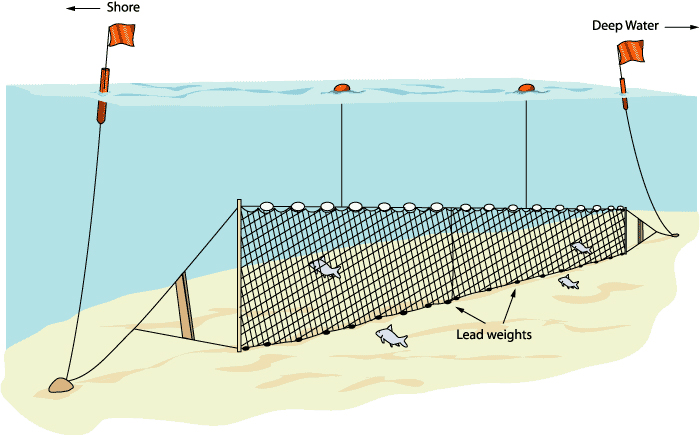Gill Nets
Gill net facts:
- Contain floats along the top and weights on the bottom (stands like a fence along the bottom, but can also be suspended)
- Fish too big to swim through the netting get caught by the gills when they try to back out
- Generally set perpendicular to shore and strung end to end in gangs
- Single net varies in depth from 6 to 20 feet and length from 100 to 400 feet
- Handled in boxes, 3 to 5 nets or 1200 to 1800 feet per box
- United end to end to form gangs and may reach 3 to 5 miles in length
- Large mesh 4 to 5 inches stretched measure for whitefish, trout, and walleye
- Small mesh 2 3/8 to 3 inches for lake herring, chubs, yellow perch, and round whitefish
- Gill nets have been set in depths greater than 700 feet
All gill nets set in depths greater than 15 feet are marked with a staff buoy at each end with at least 4 feet exposed above the surface of the water, with a red or orange flag at least 12 inches by 12 inches bearing the license number of the fisher and affixed to the top of the staff.
Any gill net or portion of a gill net set in water less than 15 feet deep have 1 gallon red or orange float or a red or orange 6 x 14 inch PVC float on each end that is in water less than 15 feet deep. The floats at the ends of the net bear the license number of the fisher. These “beach set” nets must also have either an additional float of the size described above spaced every 300 feet or less along the length of the net that is in water less than 15 feet OR two standard commercially available fluorescent orange floats at least 1.5 by 4 inches in size along the corkline every 12 feet in water less than 15 feet.
(Illustration from MSU SeaGrant)

